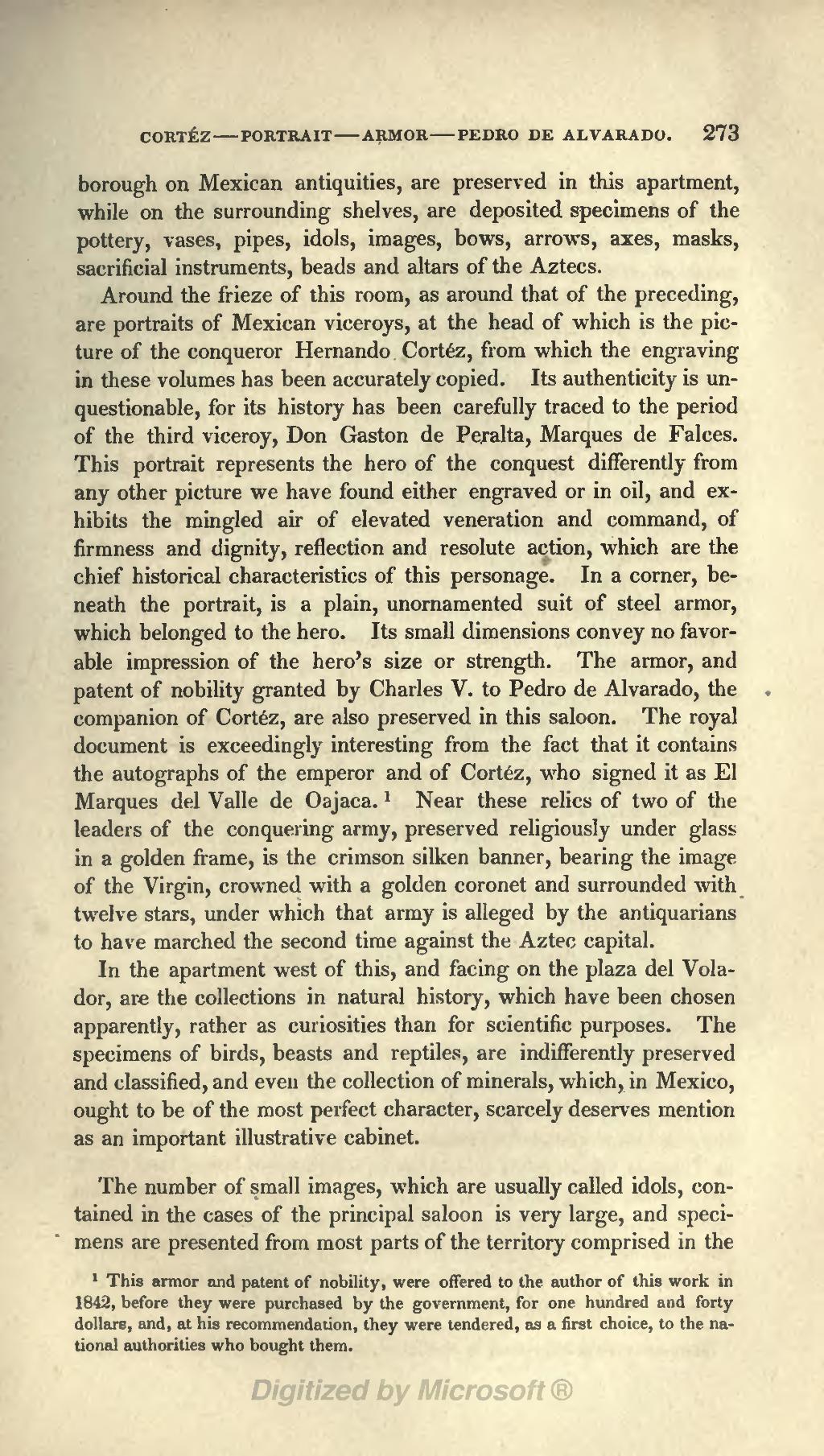borough on Mexican antiquities, are preserved in this apartment, while on the surrounding shelves, are deposited specimens of the pottery, vases, pipes, idols, images, bows, arrows, axes, masks, sacrificial instruments, beads and altars of the Aztecs.
Around the frieze of this room, as around that of the preceding, are portraits of Mexican viceroys, at the head of which is the picture of the conqueror Hernando Cortéz, from which the engraving in these volumes has been accurately copied. Its authenticity is unquestionable, for its history has been carefully traced to the period of the third viceroy, Don Gaston de Peralta, Marques de Falces. This portrait represents the hero of the conquest differently from any other picture we have found either engraved or in oil, and exhibits the mingled air of elevated veneration and command, of firmness and dignity, reflection and resolute action, which are the chief historical characteristics of this personage. In a corner, beneath the portrait, is a plain, unornamented suit of steel armor, which belonged to the hero. Its small dimensions convey no favorable impression of the hero's size or strength. The armor, and patent of nobility granted by Charles V. to Pedro de Alvarado, the companion of Cortéz, are also preserved in this saloon. The royal document is exceedingly interesting from the fact that it contains the autographs of the emperor and of Cortéz, who signed it as El Marques del Valle de Oajaca.[1] Near these relics of two of the leaders of the conquering army, preserved religiously under glass in a golden frame, is the crimson silken banner, bearing the image of the Virgin, crowned with a golden coronet and surrounded with twelve stars, under which that army is alleged by the antiquarians to have marched the second time against the Aztec capital.
In the apartment west of this, and facing on the plaza del Volador, are the collections in natural history, which have been chosen apparently, rather as curiosities than for scientific purposes. The specimens of birds, beasts and reptiles, are indifferently preserved and classified, and even the collection of minerals, which, in Mexico, ought to be of the most perfect character, scarcely deserves mention as an important illustrative cabinet.
The number of small images, which are usually called idols, contained in the cases of the principal saloon is very large, and specimens are presented from most parts of the territory comprised in the
- ↑ This armor and patent of nobility, were offered to the author of this work in 1842, before they were purchased by the government, for one hundred and forty dollars, and, at his recommendation, they were tendered, as a first choice, to the national authorities who bought them.

